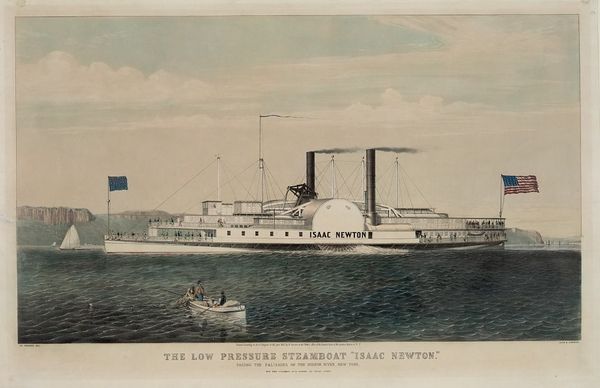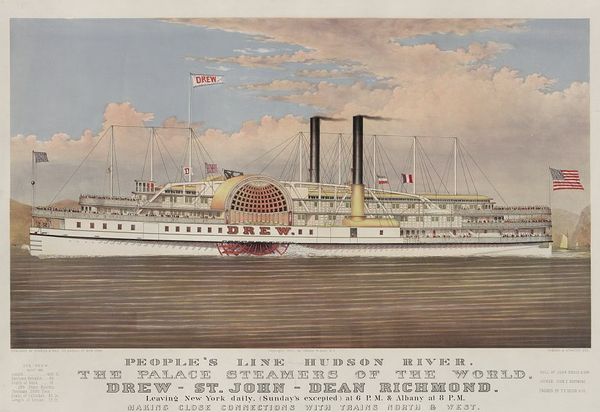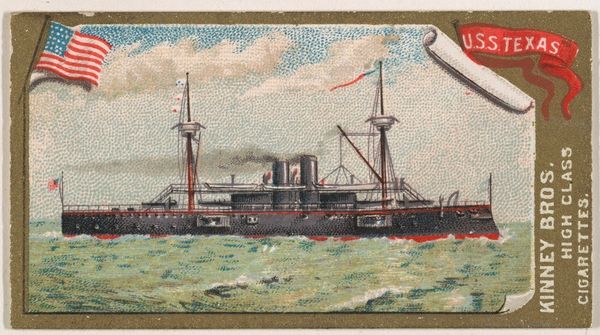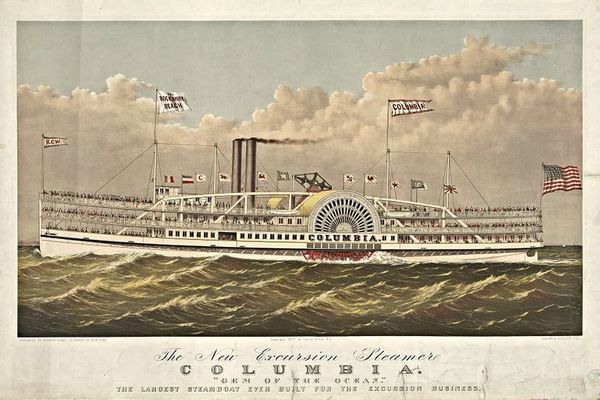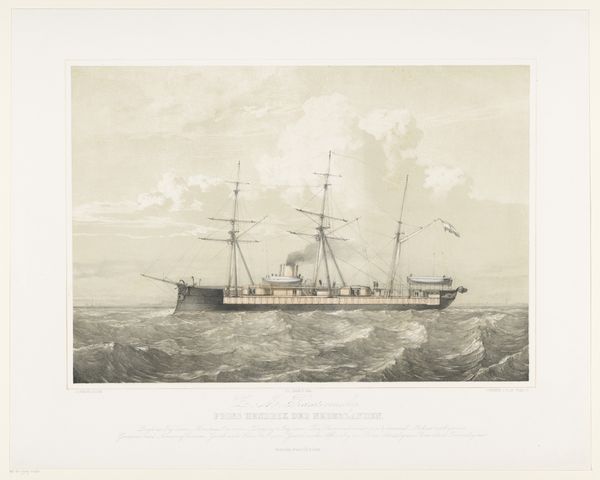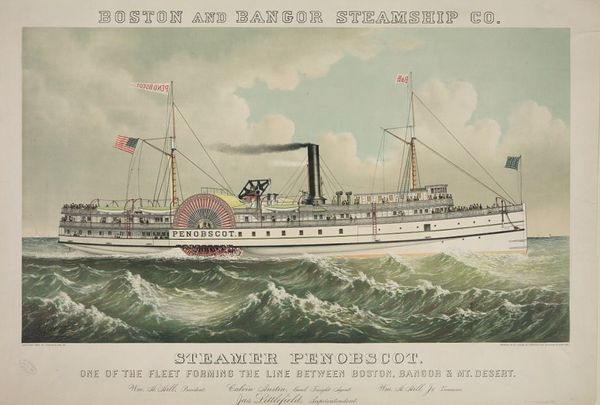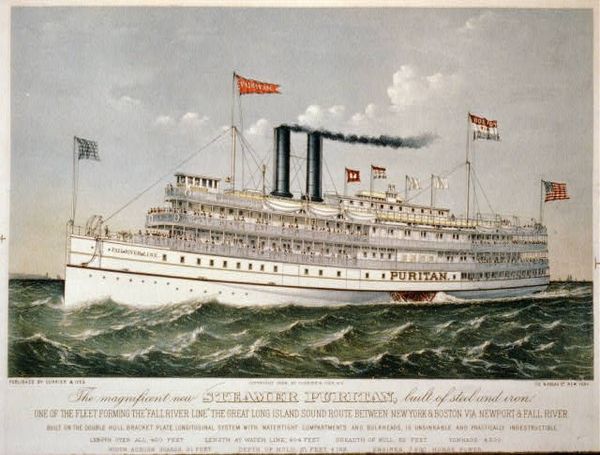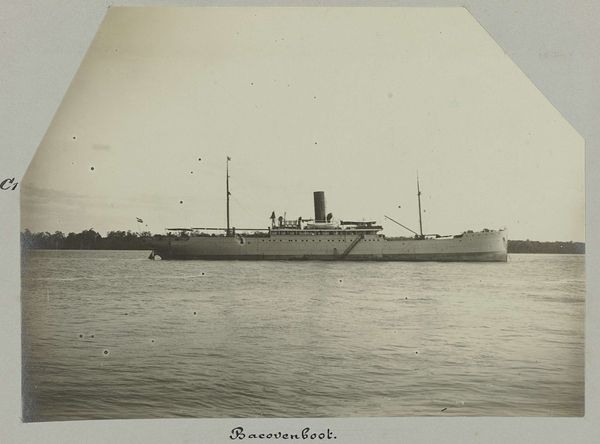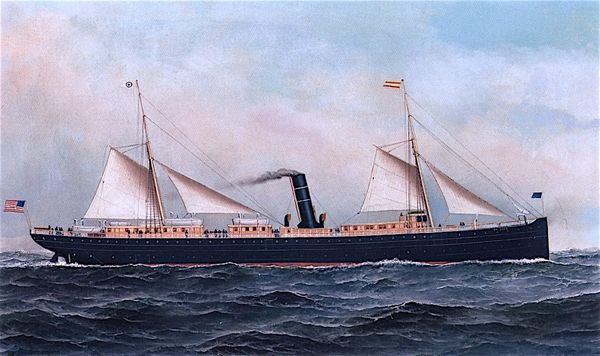
Copyright: Public domain
Curator: This lithograph, titled "Steam Yacht Namouna," dates back to 1882, and was produced by Currier and Ives. The scene offers an intimate, if somewhat idealized, portrayal of maritime leisure. Editor: Immediately, I'm struck by the almost dreamlike quality. The colors are soft, and there’s a dynamic yet serene sense of movement between the water and sky. It creates this sensation of tranquility amidst the ship's journey. Curator: The Romantics would adore the picturesque detail of the steamer juxtaposed with nature's grandeur, rendered accessible through lithography's inherent reproducibility and commercial availability. It's the convergence of industrial power and aesthetic delight. The yacht was owned by James Gordon Bennett Jr, son of the publisher of the New York Herald. It’s important to remember this as leisure like this, represented here, was an aspirational dream, especially post-Civil War. Editor: Observe the precise delineation of the ship’s rigging and its overall design against the looser, expressive brushwork—or, rather, the impression of it created via lithography—of the waves. How effectively that tension accentuates the formal elegance inherent in maritime engineering of the era. Curator: And who comprised that sailing crew? The sailors operating it would have worked in tough, relentless conditions. In a picture exuding affluence and freedom, those laborers disappear, masked beneath the waves and the industrial revolution. The yacht appears to glide along effortlessly; such images contributed heavily toward shaping nineteenth-century industrial aspirations. Editor: Indeed. And yet the yacht *does* appear to effortlessly cut through water thanks to formal elements such as the contrast of the dark hull with the foam of the cresting waves, leading the eye dynamically across the image. In this reading, the ship as object dominates; questions regarding labor are effectively obfuscated by representational prowess. Curator: Considering both technique and social conditions really help give meaning and impact to these popular prints. What's initially consumed as an everyday domestic product is revealed as a layered signifier of society's aspirations and oppressions. Editor: A persuasive and fitting conclusion. Considering those opposing elements indeed changes the perception. Thank you! Curator: Thank you.
Comments
No comments
Be the first to comment and join the conversation on the ultimate creative platform.
